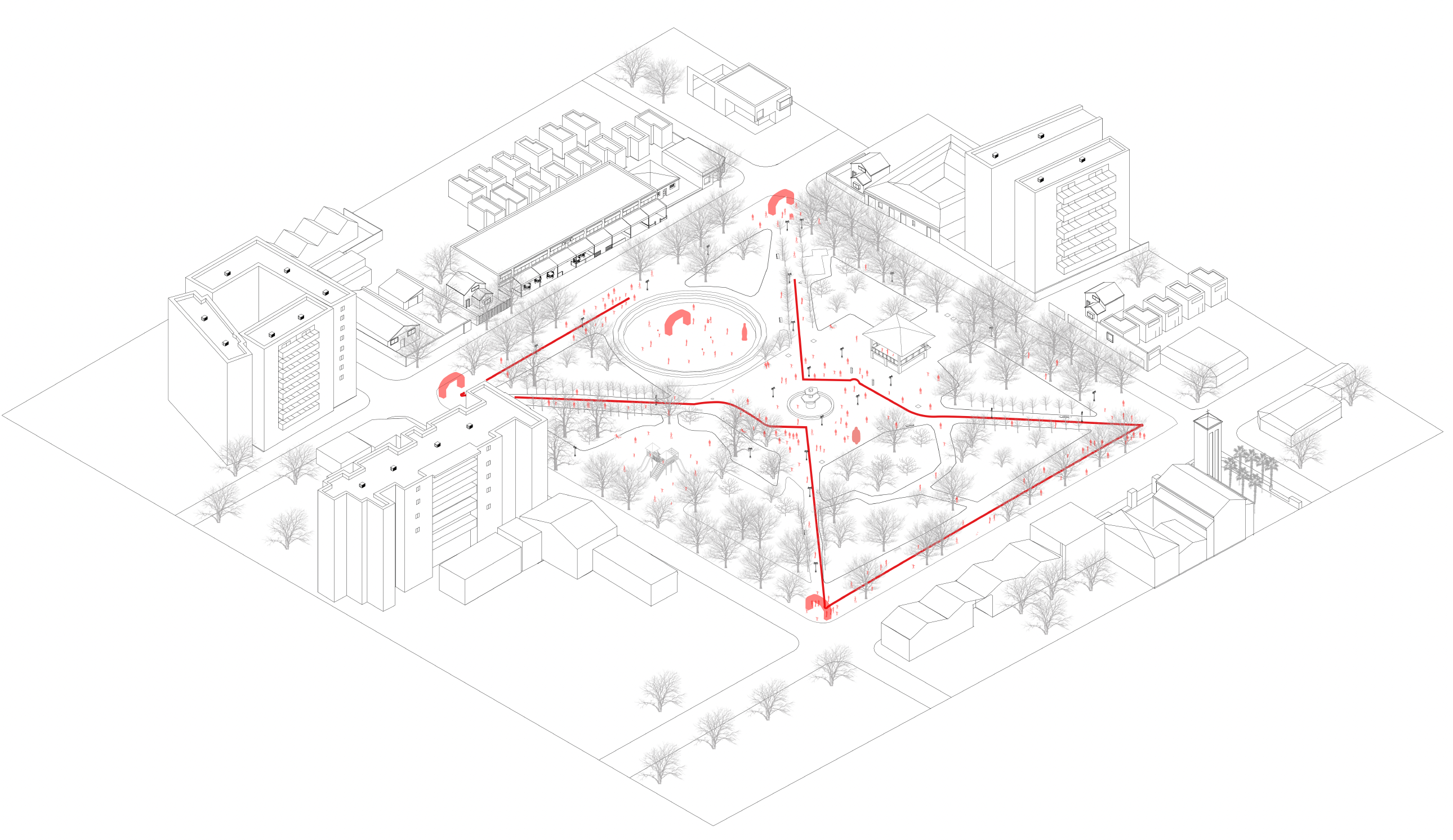Food in the Public Space
The City of Talca and the _Completo_
DOI:
https://doi.org/10.30827/sobre.v11i.31591Keywords:
food, city, culture, Talca, completoAbstract
Food in the city reflects the essence of everyday life, strengthening both the identity and diversity of an urban environment. Through food, it is possible to understand how inhabitants interact and build bonds, allowing different cultures and realities to coexist and express themselves within a common territory. This article aims to reflect on food in the city from a cultural and social perspective, with a particular focus on the phenomenon of the completo in Talca (Chile). This analysis seeks to highlight how food, beyond its nutritional function, acts as a catalyst for activities, transforming the dynamics of the urban landscape. Finally, the article explores an urban intervention carried out in Talca by two young architecture students, who used food and a public event to explore the relationship between food and social space in the city.
Downloads
References
Assael, D. (26 de mayo de 2008). ¿En qué están las escuelas de Arquitectura en Chile?. Plataforma Arquitectura. https://www.archdaily.cl/cl/02-7844/%25c2%25bfen-que-estan-las-escuelas-de-arquitectura-en-chile.
Calderón, M. (2022) Mercado callejero y producción del espacio en Santiago (Chile). Una exploración desde las prácticas culinarias Universum, 37(1). https://www.scielo.cl/scielo.php?script=sci_arttext&pid=S0718-23762022000100203. DOI: https://doi.org/10.4067/s0718-23762022000100203
De Solà-Morales, M. (2006) Comiendo en la metrópolis. Quaderns d’arquitectura i urbanisme, 251, 76. https://raco.cat/index.php/QuadernsArquitecturaUrbanisme/article/view/235162/349848.
Gausa, M. (2010). Land Links. En M. Gausa, R. Devesa (Ed). Otra Mirada. Posiciones Contra Crónicas. La Acción Crítica Como Reactivo en la Arquitectura Española Reciente (pp. 95-105). Gustavo Gili.
Larcher, C. y Camerer, S. (2016). Raco. Comida Callejera, 70-83. https://drive.google.com/file/d/1c8Sc8FqLe9w3N4yplCiPYHsM89SU6da_/view?usp=sharing.
Lefebvre, H. (2013). La producción del Espacio, Capitán Swing.
Maturana, H. y Varela, F. (2018). De Máquinas y seres vivos Autopoiesis: la organización de lo vivo. Universitaria.
Molina, I. (23 de noviembre de 2023). Talca se convirtió en estrella de la publicidad gracias al “completo más grande del mundo”. Las Últimas Noticias.
Oyarzún, V. y Rojas, J. (2023). Talca, La Ciudad del Completo. https://urbanbat.org/talca-la-ciudad-del-completo/.
Peran, M. (2008). Post-it city: Ciudades Ocasionales. En M. Peran (Ed.), Post-it city: Ciudades Ocasionales (p. 10). Turner.
Pinto. J. y Salazar, G. (2014). Historia Contemporánea de Chile Tomo III La economía- mercados, empresarios y trabajadores. Editorial LOM.
Redolés, M. (2003). El Especial y su lógica fase superior, es decir El Completo o “Completeins”. Patrimonio Cultural: revista estacional de la Dirección de Bibliotecas, Archivos y Museos (Dibam), Ministerio de Educación de Chile, 27, 32-33.
Salazar, G. (2003). Ferias Libres: espacio residual de soberanía ciudadana. Sur.
Steel, C. (2016). Ciudades hambrientas: como el alimento moldea nuestras vidas. Capitán Swing.
Trickey, E. (2016). Before Nathan's there was Feltman's: The history of the Coney Island hot dog. Smithsonian Magazine. https://www.smithsonianmag.com/history/origins-coney-island-hot-dog-uniquely-american-story-180959659/.

Published
Versions
- 2025-01-31 (2)
- 2025-01-31 (1)
How to Cite
Issue
Section
License
Copyright (c) 2025 Víctor Letelier

This work is licensed under a Creative Commons Attribution-NonCommercial-ShareAlike 4.0 International License.
Aquellos autores/as que tengan publicaciones con esta revista, aceptan y certifican los términos siguientes:
· Que ha contribuido directamente al contenido intelectual del trabajo, del cual se hace responsable a todos los efectos.
· Que aprueba los contenidos del manuscrito que se somete al proceso editorial de Revista SOBRE, y por tanto está de acuerdo en que su nombre figure como autor.
· Que el contenido del artículo no ha sido publicado y que tampoco figura en otro trabajo que esté a punto de publicarse.
· Que se compromete a no someterlo a consideración de otra publicación mientras esté en proceso de dictamen en Revista SOBRE, ni posteriormente en caso de ser aceptado para su publicación.
· Que no ha tenido ni tiene, relaciones personales o financieras que puedan introducir prejuicios y sesgos en el desarrollo o los resultados del presente trabajo.
· Que han sido mencionadas en el epígrafe de agradecimientos todas aquellas personas que, habiendo otorgado su permiso para tal mención, han contribuido de manera sustancial al desarrollo del trabajo.
· Que se compromete a facilitar, cuando así lo requiera la revista, el acceso a todos los datos y fuentes en los que se funda el trabajo presentado.
· Que participará activamente en la realización de todas aquellas modificaciones de estilo u ortotipográficas que sean necesarias para la publicación del trabajo cuando así se lo notifique el equipo editorial de la revista.
· Que no ha violado, ni violará, las leyes y derechos humanos o animales durante el proceso de investigación y publicación de este trabajo.
· Que ninguna de las instituciones en las que desarrolla su labor científica e investigadora ha presentado objeciones con respecto a la publicación del manuscrito que se somete a evaluación.
· Que todos los datos y las referencias a materiales ya publicados están debidamente identificados con su respectivo crédito e incluidos en las notas bibliográficas y en las citas que se destacan como tal y, en los casos que así lo requieran, cuenta con las debidas autorizaciones de quienes poseen los derechos patrimoniales.
· Que los materiales están libres de derecho de autor y se hace responsable de cualquier litigio o reclamación relacionada con derechos de propiedad intelectual, exonerando de responsabilidad a Revista SOBRE.
· Que en caso de que el trabajo sea aprobado para su publicación, autoriza de manera ilimitada en el tiempo a la entidad editora para que incluya dicho texto en Revista SOBRE y pueda reproducirlo, editarlo, distribuirlo, exhibirlo y comunicarlo en el país y en el extranjero por medios impresos, electrónicos, CD, Internet o cualquier otro medio conocido o por conocer.









